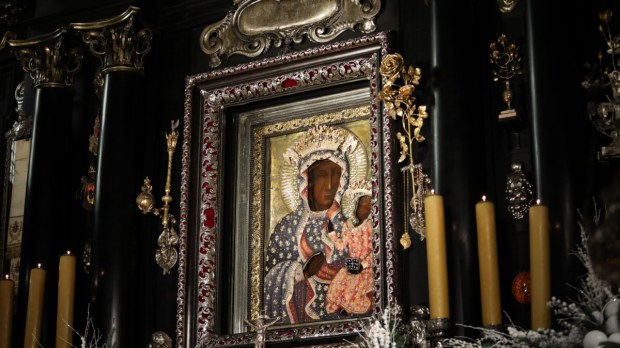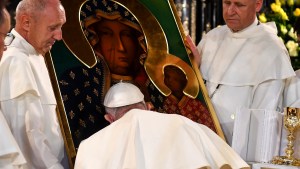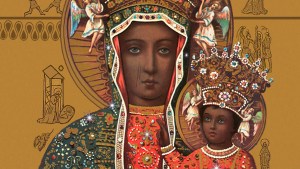No one could have invented such a scenario. What a strange idea to arrest and put behind bars… a painting! Why imprison it? And above all, how could the communist secret services have thought for a moment that their stratagem could have any effect?
For this was not a random image of religious devotion. It was a symbol of Polish Catholic faith and anti-Communist resistance. The copy of the miraculous icon of Our Lady of Czestochowa aroused an unprecedented spiritual momentum by becoming a political prisoner in a class of its own on June 20, 1966.
To understand the impact of this event, we need to go back to the 1950s, the terrible period of the Stalinist rule — the worst Poland had ever suffered. On May 13, 1957, Cardinal Stefan Wyszynski — then Primate of Poland, beatified on September 12, 2021 — went to the Vatican with a copy of the icon of the Black Madonna of Czestochowa. He asked Pope Pius XII to consecrate it, and thus give his blessing to the Great National Novena, which was to prepare the faithful for the millennium of Poland’s baptism.
The pilgrimage and the national novena
A few months later, the primate’s idea came to fruition. On August 26, 1957, the novena began, with a copy of the miraculous icon making its way across the country. The icon “visited” each parish, staying for 24 hours. For the faithful, it was an unexpected feast. Streets and houses were decorated for the occasion. At parish entrances, the painting was greeted with fanfare.
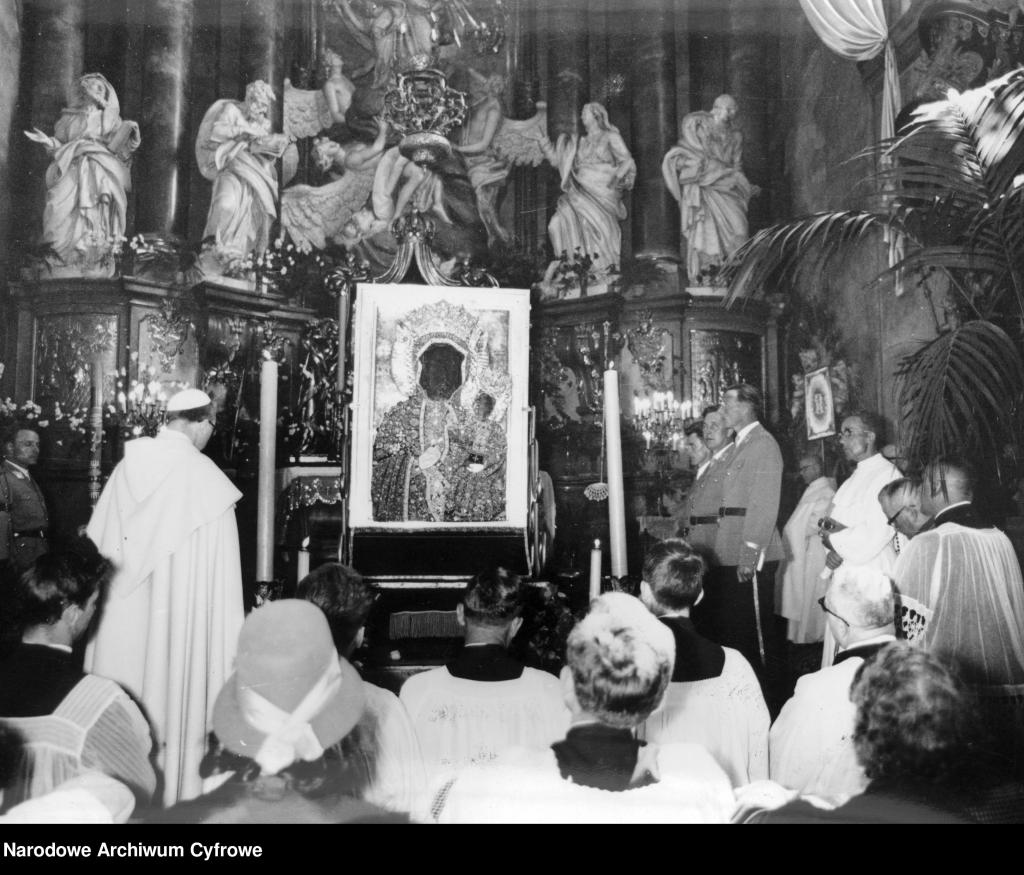
Its arrival was preceded by several weeks of preparation, with spiritual retreats, confessions and services. Once the organizers had set up the image of the Virgin in the church, the parishioners organized themselves to keep vigil day and night. It’s hardly surprising that, in the context of the regime’s harsh daily reprisals, the “visits” to Our Lady of Czestochowa, a symbol of resistance and victory, aroused an ever-growing spiritual and patriotic fervor.
The secret services were now keeping a close eye on the stops along its itinerary. They used a variety of methods to keep people from taking part in the celebrations.
The unprecedented phenomenon worried the authorities, who were beginning to fear that it could have too dangerous an impact on society. The secret services were now keeping a close eye on the stops along its itinerary. They used a variety of methods to keep people from taking part in the celebrations. What’s more, during each stage of the icon’s trip, the military stopped the car carrying the painting, forcing the driver to take another route so that the faithful waiting for the icon along the original route couldn’t see it.
The arrest
In 1966, the millennial year of Poland’s baptism, the confrontation between state and church reached a climax. Realizing that it was losing the battle against the Church, the government decided to take definitive and effective action. The date was set: June 20, 1966. That day, the painting was in Cardinal Wyszynski’s car on his way to Warsaw, the country’s capital.
“We were stopped by the secret service in the village of Liksjany, 18 km (11 miles) from Ostróda,” the primate noted in his diary that evening. “There was a field around us. A military vehicle and a motorcycle were there. We had to stop. Suddenly, more and more military vehicles surrounded us, and there were motorcycles and sirens. After an hour of futile discussions, the action began,” writes the primate.
A few priests held on to the icon until an agent took it from them and forcibly carried it away. “There was a helicopter circling overhead. We felt like we were on the war front,” Cardinal Wyszynski wrote in his diary Pro memoria.
Imprisonment
The military took the painting directly to Warsaw‘s Cathedral of St. John the Baptist, without following the itinerary with scheduled stops in parishes. The authorities didn’t allow the icon to leave the city. They locked it in the cathedral sacristy behind a grille.
The monks (…) put this unequivocal inscription in front of it: “Here is the icon imprisoned by the authorities.”
On September 2, Cardinal Wyszynski requested that the icon be made available for the millennium celebrations of Poland’s baptism, to be held in Czestochowa. Fifty military officials escorted the painting to the Jasna Gora monastery in Czestochowa. The monks placed it in a chapel behind a grille, and put this unequivocal inscription in front of it: “Here is the icon imprisoned by the authorities.”
The authorities set up military posts at the monastery gates. From then on, all cars leaving the monastery were searched, including that of the Polish primate.
Cardinal Wyszynski asked the faithful to continue the novena and pilgrimage … with the empty frame of the famous image.
Faced with this situation, Cardinal Wyszynski asked the faithful to continue the novena and pilgrimage … with the empty frame of the famous image, through the successive dioceses in the country.
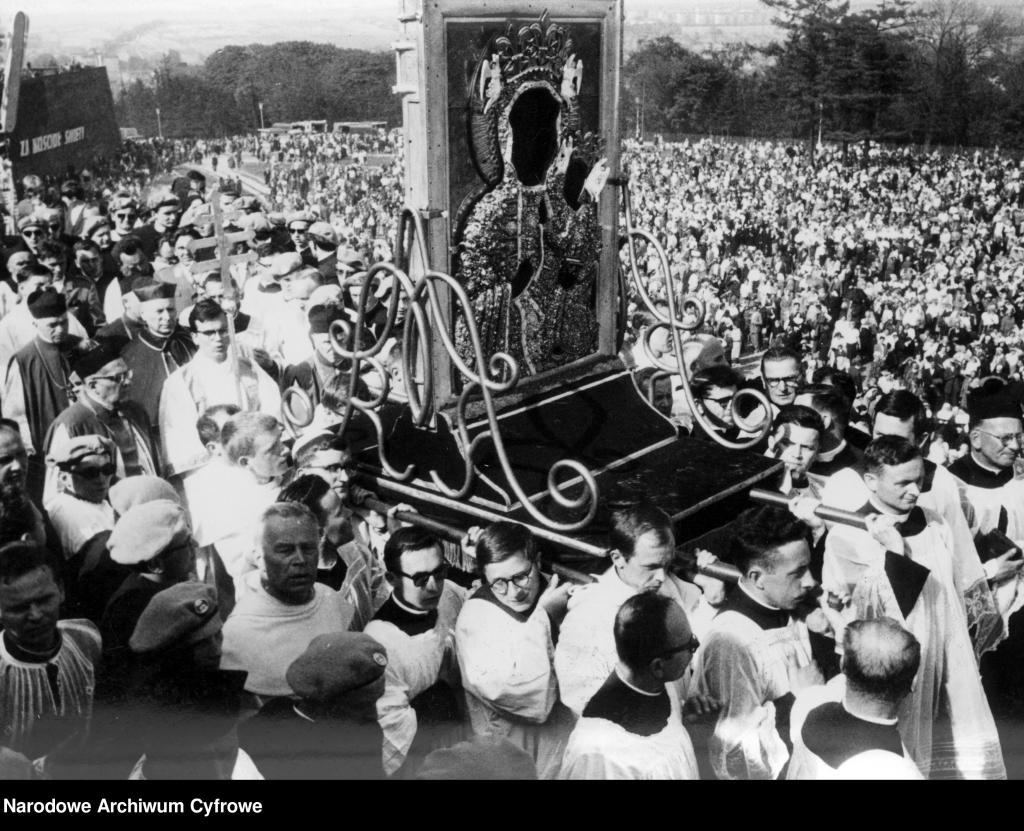
The empty frame quickly became a symbol of the Church’s persecution, and aroused even greater fervor among the faithful by adding a political meaning. Its journey continued until 1972, when a young priest, Fr. Józef Wójcik — then vicar at a parish in Radom (central Poland) — decided to “liberate” the icon.
The escape
Before taking action, he presented his secret plan for the jailbreak of the icon to Primate Wyszyński. The latter gave him his blessing. On June 13, 1972, the image was successfully liberated thanks to a contraband key and a close-knit team: Father Wojcik was assisted by another young priest and two nuns.
The painting was transported to his parish in Radom, where it was hidden for several days. It “miraculously” reappeared on June 18, 1972, during a procession led by Primate Wyszynski and Cardinal Wojtyla, the future Pope John Paul II. As luck would have it, with the change in the Communist Party’s First Secretary and a relative thaw in the regime, the secret services dropped the investigation into the theft of the painting.
The pilgrimage of the liberated icon continued uninterrupted until October 12, 1980. A second pilgrimage of the Black Madonna of Czestochowa has been underway since 1985. Her most recent stop was on January 13, 2023, at a penitentiary in Gębarzewo (in the west of the country). There, inmates were able to meditate and pray in front of the icon for 24 hours. They were undoubtedly especially comforted by this presence of one who had also experienced imprisonment.
